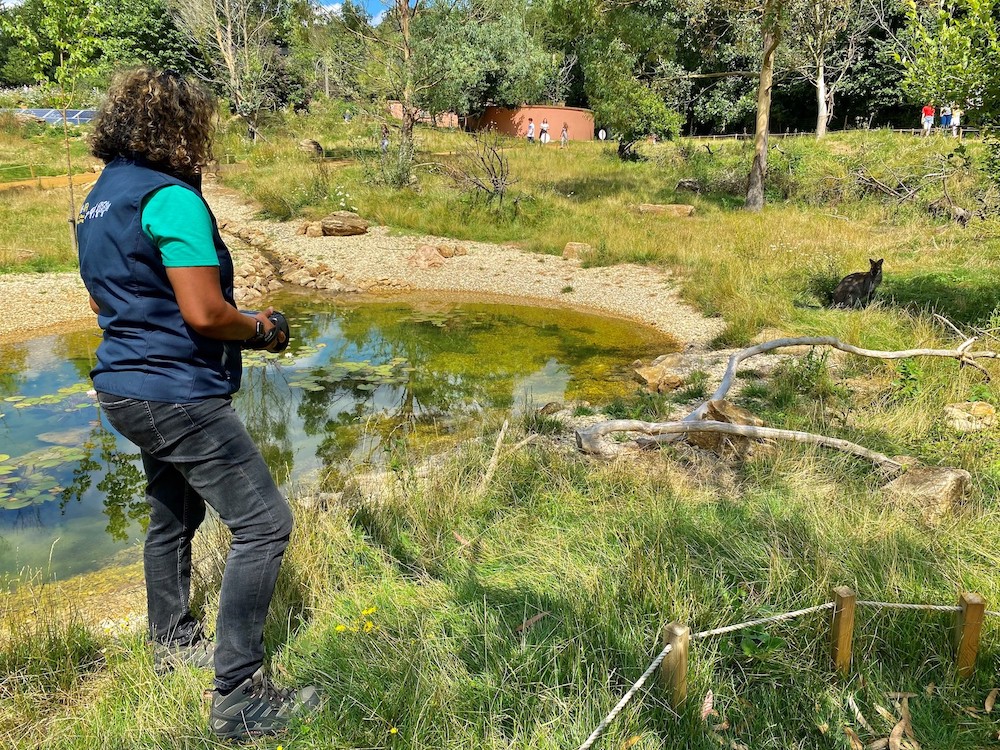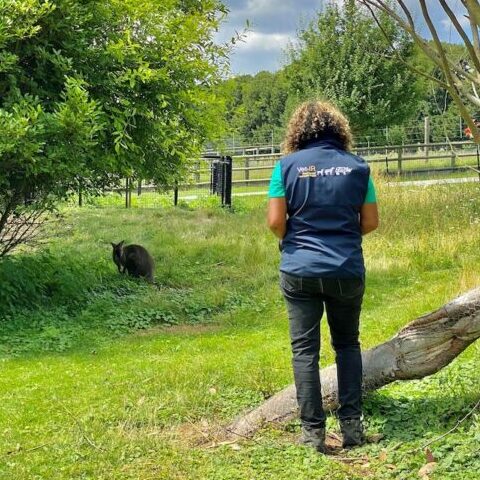Infrared imaging for non-invasive health monitoring
August 27, 2021
August 27, 2021

Marwell was recently part of a pilot study to find out if Digital Infrared Thermal Imaging (DITI) can be used to monitor animal health.
We were visited by Dr. Liat Wicks, zoology lead and researcher from VET-IR; an organization dedicated to developing clinical standard physiological imaging to benefit animal welfare.
Digital infrared (IR) thermal images can be used to identify changes in blood flow through the skin by detecting increases or decreases in the temperature of the skin’s surface. Any changes in blood flow due to inflammation or disease will become apparent when images taken over time are compared and a difference greater than 1 degree C is identified between comparable images. Therefore, thermal imaging provides a way to monitor health and welfare non-invasively, without the need to sedate the animal, which always carries a risk.

One of the current drawbacks with using this technology in an outdoor setting is the environmental impacts on the quality of the images and thus their usefulness to detect early-stage pathology. Whilst this tech has previously been validated for use with some domestic species, including horses (von Schweinits, 1999) and dogs (McGowan, 2015), these are situations where there is greater control over temperature, humidity, weather, sunlight, the position of the animal, and distance between the photographer and animal.
Liat’s visit was part of a pilot study to ascertain whether Digital Infrared Thermal Imaging (DITI) can provide accurate results for a free-ranging non-domesticated species, the red-necked wallaby Macropus rufogriseus.
Whilst the weather wasn’t perfect and a couple of the wallabies preferred to rest in the shade of the long grasses than pose for the camera, Liat was able to take enough images to begin to ascertain the possibilities of using this method in an outdoor environment and to identify factors that we can mitigate during her next visit to increase the success rate.
We will keep you updated as this project progresses!
By Dani Free, Animal Behaviourist and Dr. Liat Wicks, VET-IR
References
McGowan, L., Loughin, C.A., Marino, D.J., Umbaugh, S.E., Liu, P., Amini, M., Solt, P., Lesser, M.L. and Akerman, M., 2015. Medical infrared imaging of normal and dysplastic elbows in dogs. Veterinary Surgery, 44(7), pp.874-882.
Von Schweinitz (1999) Thermographic Diagnostics in Equine Back Pain. Veterinary Clinics of North America: Equine Practice Volume 15, Issue 1, April 1999, Pages 161-177